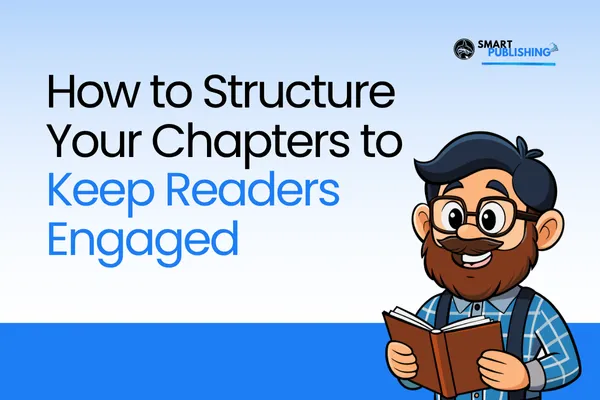
How to Structure Your Chapters to Keep Readers Engaged
How to Structure Your Chapters to Keep Readers Engaged
📘 Smart Publishing Impact Series – Episode 39
You’ve done it—you’ve written your book, poured your expertise onto the page, and shared insights that could help others grow. But here’s the question most authors don’t think about:
👉 Are readers actually finishing your book?
You can have the best ideas in the world, but if your chapters aren’t structured to hold attention, your message may never reach the finish line. That’s why in today’s post, we’re diving into how to structure your chapters—especially for nonfiction books—so readers stay engaged from start to finish.
💡 Why Structure Matters
If your book is in the nonfiction space—business, self-help, instructional, or reference—your content must do more than inform. It has to flow.
Unlike stories that naturally pull readers in with narrative arcs, nonfiction requires intentional structure to maintain momentum. When your chapters are designed with rhythm and clarity, readers know what to expect, process your ideas faster, and actually retain what they learn.
That’s where smart structure comes in.
🧱 Start With Consistency
Every chapter should feel familiar. Readers shouldn’t have to reorient themselves every time they turn a page.
If Chapter 1 starts with a story, Chapter 2 should too. If you include a takeaway section at the end of one chapter, include it at the end of all of them. Consistency builds trust—and lets your audience focus on the message, not the format.
🧩 Break It Down With Section Headers
Chunking your content with section headers helps readers digest complex material. It also gives them natural “stopping points,” which boosts their sense of accomplishment and makes them more likely to finish.
When we read, our brains like structure. Think of section headers as mental shelves—each one helps organize your ideas so readers can store and recall them easily.
💬 Use Pull Quotes to Highlight Key Ideas
Every author has “mic drop” lines—the sentences that make readers stop and think. Highlight those with pull quotes (those larger, stylized quotes that stand out mid-page).
They add visual interest, reinforce key ideas, and help readers remember your most powerful statements.
Just make sure to be consistent—if you use pull quotes in one chapter, use them throughout.
📦 Add Callout Boxes
A callout box is a short, visually distinct section that draws attention to important content—like definitions, bottom-line insights, or mindset shifts.
These boxes can be clean and simple or creatively styled (think sticky notes, notebook paper, or shaded boxes). The goal is to give readers something to pause on—something worth remembering.
📝 End Each Chapter With a Wrap-Up
Give readers closure by summarizing the key takeaways or lessons learned at the end of each chapter.
If your book includes personal growth or transformation, go further: add reflection questions or workbook prompts. Turning your reader into an active participant increases engagement and makes your content more actionable.
🔗 Enhance the Experience With QR Codes
Books don’t have to be limited to the page. By adding QR codes, you can link readers to videos, resources, guided meditations, or downloads that enhance their learning.
This technique is especially powerful if you’re using your book as part of a larger business strategy. QR codes can direct readers to free resources, your website, or even a lead magnet that captures their email for ongoing communication.
🧠 Visuals Matter
Don’t underestimate the power of visuals. Tables, charts, and graphics can simplify complex information and make your content easier to absorb.
If you want inspiration, check out Design for How People Learn by Julie Dirksen—it’s full of simple visuals and even stick figures that make learning concepts fun and memorable.
⚖️ Choose Your Techniques Wisely
Here’s the golden rule: don’t overdo it.
You don’t need every technique in the same chapter. Too many visual elements can distract rather than enhance. Pick two or three that best serve your message, and use them consistently throughout your book.
If you ever feel like you’re forcing something—it probably doesn’t belong.
🏁 Final Word
A well-structured chapter isn’t just easier to read—it’s more impactful. When your readers can follow your message, stay engaged, and apply what they learn, your book becomes more than information. It becomes transformation.
And that’s the kind of reading experience that turns first-time readers into lifelong fans.
Keep writing your story—because the world needs your voice.
—Renee
